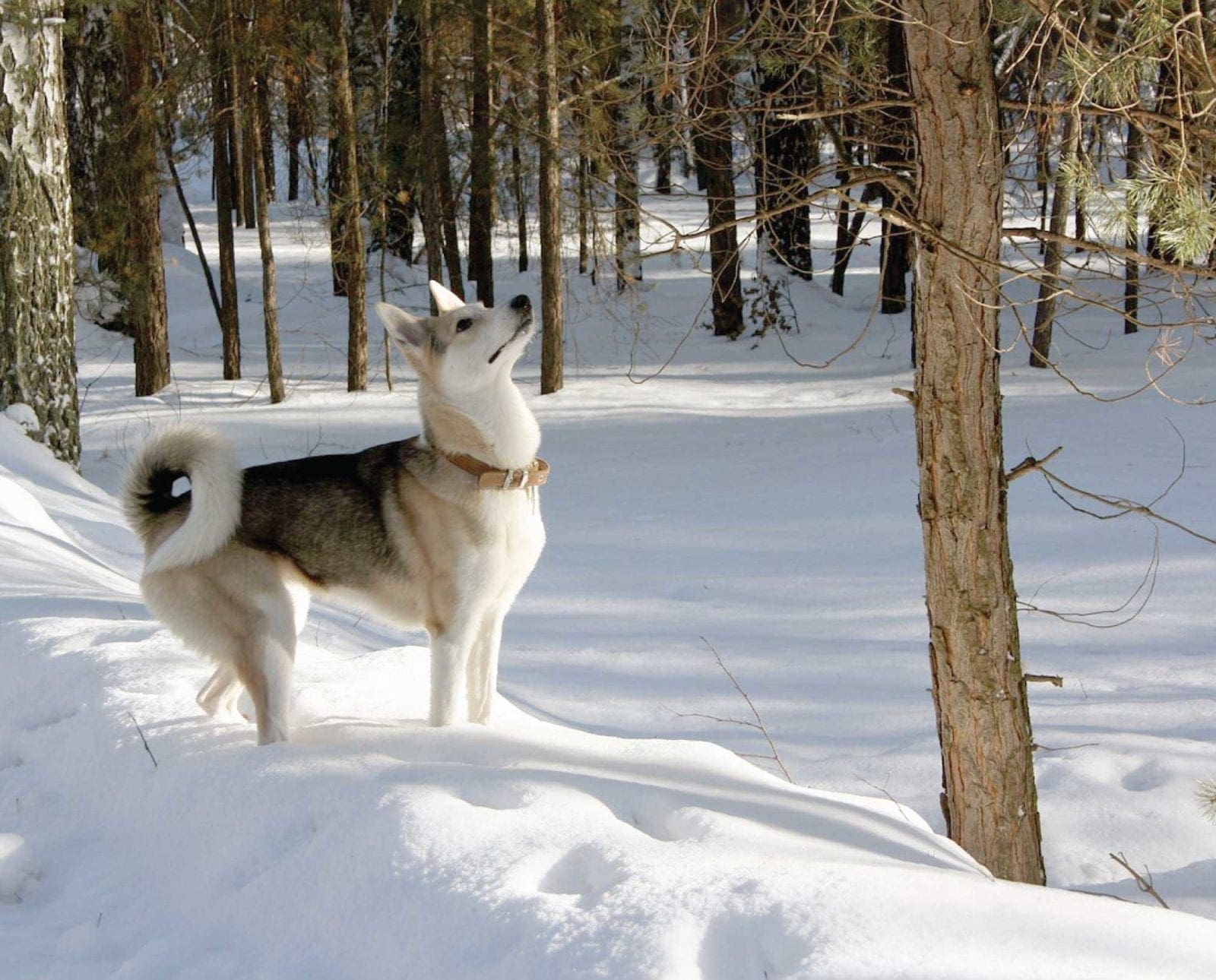Home » Project Upland Listen » Hunting Dog Confidential Podcast » Origins and Use of the Spitz-type Hunting Dog Breeds: HDC Episode #12
Origins and Use of the Spitz-type Hunting Dog Breeds: HDC Episode #12

Jennifer Wapenski is the Director of Operations and Managing Partner…
Explore some of the oldest types of dogs that have developed alongside humans for hunting forest birds, small game, and big game
In this episode, we travel way back in time to some of the earliest types of dogs that developed alongside humans for the mutual benefit of dog and man. These dogs are classified as spitz dogs, named for their pointy ears and muzzle. While the various breeds are found around the world and used in a variety of working tasks, they all share a few key characteristics: a thick coat, pointy ears, a short muzzle, a tail that curls up and over their back, and an independent character that harkens back to their earliest ancestors.
LISTEN on Apple Podcast | Google Play | Spotify | Stitcher
Not all spitz dogs are currently used for hunting, though they can all trace back to early hunting roots. Today, spitzes are used to pull sleds, herd livestock, guard property, provide companionship, as well as hunt birds, small game, and big game.
One interesting example of the spitz, though now extinct, is the Salish Wool Dog. These small, white dogs were developed and raised by the Coast Salish indigenous people of what is now Washington and British Columbia. They were deliberately managed for their thick, luxurious fleeces, which were sheared each spring and spun into prized blankets and other textiles.
As for hunting spitzes, the most primitive style of hunting is that done with Korean Jindos. The hunter would release his pack of dogs, who went out into the forest and hunted down big game such as a deer or boar. Once the animal was down, one dog would return to the hunter to alert him to the kill and to lead him to the site, while the rest of the pack remained with the game to protect it from scavengers.
In Scandinavia, spitzes such as the Finnish Spitz are used to locate and tree forest game birds such as the Capercaillie. Once treed, the dog will carefully bark at the bird to hold its attention and distract from the approaching hunter. This allows the hunter to cautiously approach and take the bird from the tree with either small caliber rifle or a shotgun. Small game is taken in much the same way, with the dog holding the game at bay until the hunter can arrive. Large game such as moose require a similar approach, because the moose will often stand its ground and face down the dog while the hunter approaches undetected.
The Russian Laika is another popular breed of spitz dog that is used in the pursuit of game across the northern latitudes of Russia and Scandinavia. The Laika is featured in Hunting Dog Confidential Magazine issue 1.1.
Overall, hunting spitzes represent a versatile range of skills in pursuing prey and working cooperatively with the hunter. Tune in to hear more discussion of this fascinating type of hunting dog and learn more about how they have been and continue to be used around the world.
As always, we thank you for listening and hope you’ll continue to reach out with your comments, questions, and ideas. We can be reached at HDC@northwoodscollective.com.
Share | Comment, review and discuss this episode of the podcast in our Project Upland Community Facebook group.
Enjoy the show and don’t forget to rate, review, subscribe, and share this podcast.
Hunting Dog Confidential is presented by Eukanuba Premium Performance Dog Food and supported by Dakota 283.
Jennifer Wapenski is the Director of Operations and Managing Partner at Project Upland Media Group. She has a lifelong passion for the outdoors, dogs, and wildlife; as an adult, she discovered that upland bird and waterfowl hunting were natural extensions of these interests. What started as initial curiosity soon escalated into a life-changing pursuit of conservation, advocacy, and education. Jennifer serves in a variety of roles such as the Breed Warden for the Deutsch Langhaar—Gruppe Nordamerika breed club and on an advisory committee for the Washington Department of Fish and Wildlife.



